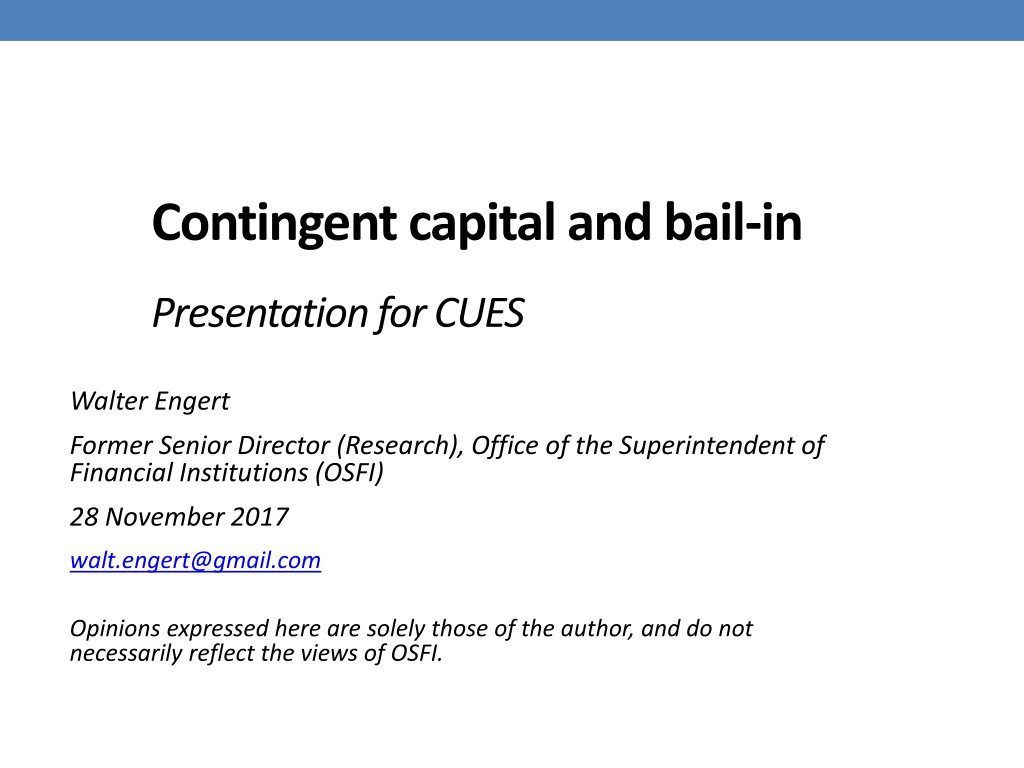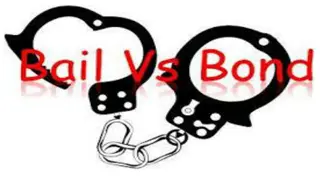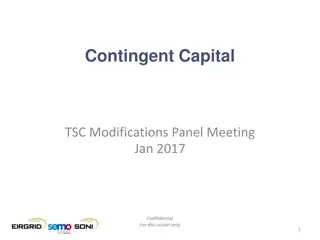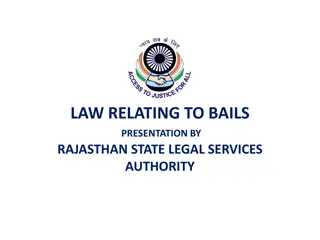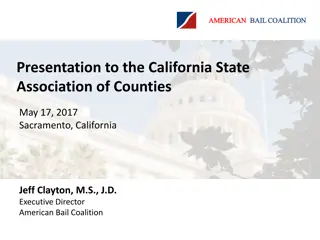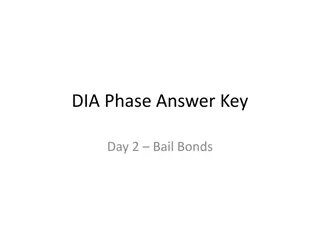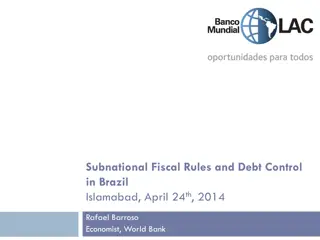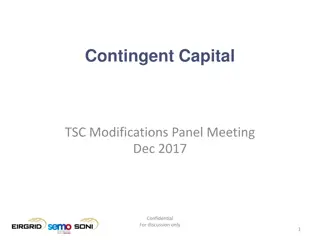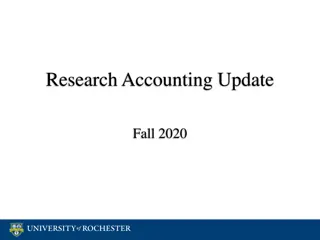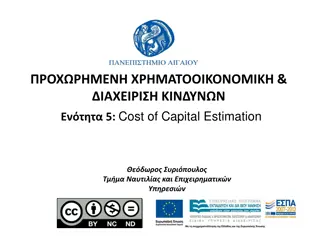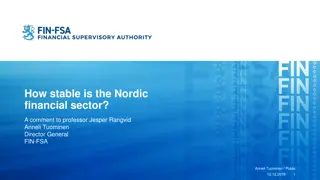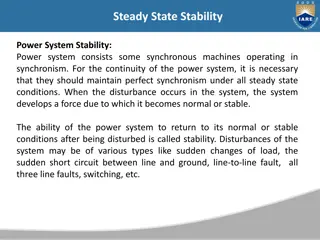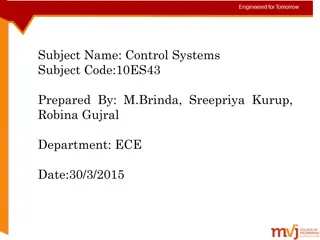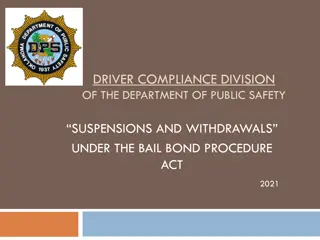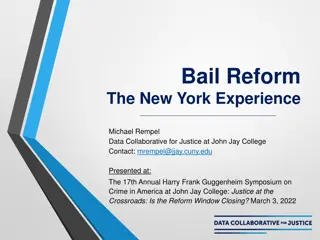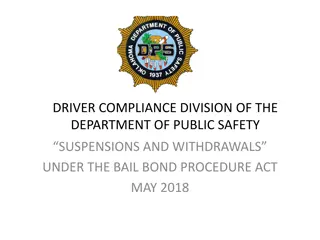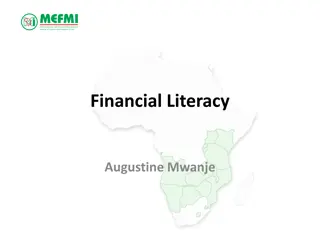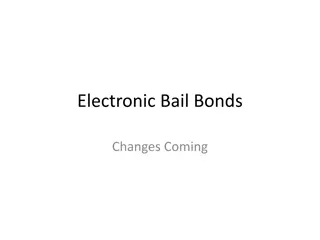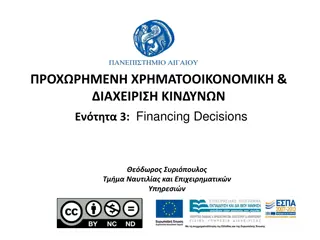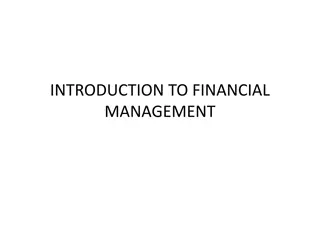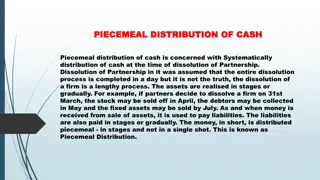Understanding Contingent Capital and Bail-In for Financial Stability
Presentation by Walter Engert discusses the need for better tools to deal with failing large banks, introducing Non-Viability Contingent Capital (NVCC) and Bail-In Debt (BID) as financial instruments issued by Canadian DSIBs. These instruments aim to recapitalize failing banks with private capital instead of public funds, reducing moral hazard and promoting financial stability in the event of bank failures.
Download Presentation

Please find below an Image/Link to download the presentation.
The content on the website is provided AS IS for your information and personal use only. It may not be sold, licensed, or shared on other websites without obtaining consent from the author. Download presentation by click this link. If you encounter any issues during the download, it is possible that the publisher has removed the file from their server.
E N D
Presentation Transcript
Contingent capital and bail-in Presentation for CUES Walter Engert Former Senior Director (Research), Office of the Superintendent of Financial Institutions (OSFI) 28 November 2017 walt.engert@gmail.com Opinions expressed here are solely those of the author, and do not necessarily reflect the views of OSFI.
2 Lessons from the crisis (and elsewhere) Major banks DSIBs are too big to fail. Cannot be resolved with conventional resolution methods Poor management of systemically important banks under stress generates large costs for other FIs and for economy Bail-outs lead to moral hazard (encourages risk-taking), ruin government fiscal balance, and are not tolerated by the public So we needed better tools to deal with failing large banks Non-viability contingent capital (NVCC) and bail-in debt (BID)
3 U.S. 2007 08 recession
4 Intuition for NVCC and Bail-in Contingent capital and bail-in debt are financial instruments issued by Canadian DSIBs (six largest banks) that convert to common equity when a bank is under severe stress (not viable), at the discretion of government Idea is to fully recapitalize a failing DSIB with private capital Private investors are the first port-of-call to support a failing DSIB, not the public sector Bail-in, not bail-out Conversion terms are (largely) predetermined, and disclosed to investors/market Pre-packaged bankruptcy plan, pre-funded by private capital
5 But not a silver bullet Authorities would trigger conversion of NVCC and BID only if there is a high level of confidence that conversion plus additional measures would restore viability of the DSIB(s) Would also include liquidity support from the public sector Bank of Canada, CDIC Associated environment still a nightmare
6 Two parts NVCC Bail-in How do they work?
7 What is non-viability contingent capital NVCC? Preferred stock and subordinated debt that convert to common equity (CE) at non-viability, at regulatory discretion All preferred stock and sub debt issued by DSIBs must have this feature Non-viability based on OSFI judgement, input from FISC partners (Appendix 1, p. 19) Structure of NVCC instruments influenced by OSFI regulations (see references) Contractual NVCC terms have become standardized in the market typical practice and are fully transparent
8 NVCC conversion to capital Conversion terms determined by contractual arrangement between bank (issuer) and investor ? = number of CE shares allocated to NVCCprefs and NVCCsubdebt investors through conversion, in exchange for original NVCC instruments ??????? ??????= ???($5; 10 ??? ????) ?????????? ???($5; 10 ??? ????) bigger payoff, more shares ???????? = 1.5
9 What is bail-in debt BID? Senior debt instruments like bonds that can be converted into common equity (CE) at non-viability, at regulatory discretion Bail-in is additional to prior conversion of all NVCC Other interventions would also apply, notably official liquidity support Features of eligible BID instruments are set out by OSFI regulations (more on this later)
10 Bail-in conversion to capital Statutory conversion power that allows for conversion of eligible DSIB liabilities (see next slide) into CE shares All NVCC must be converted before any BID is converted ? = number of CE shares allocated to bail-in debt investors through conversion, in exchange for original BID instruments ?????? biggest payoff ????= ? 1.5 ???($5; 10 ??? ????) Amount of BID to convert is determined by CDIC/gov t, depends on how much is needed to recapitalize the DSIB M > 1; M is determined by CDIC/gov t, influences payoffs
What qualifies to be eligible as BID? Scope of BID emphasizes operational feasibility, credibility and preserving access to (short-term) liquidity in stress BID must be: Issued after implementation date; no ex post application of BI Tradable and transferable Long term (original term>400 days) Unsecured BID transparent to investors and market more generally Excludes deposits, covered bonds, structured notes & derivatives
12 Key features of the strategy For DSIBs Comply with minimum TLAC requirement, set by OSFI If the bank becomes non-viable Temporary CDIC (resolution) control of DSIB All NVCC is converted into common shares BID is converted, in whole or in part, into common shares on pro rata basis On exiting control Compensation for creditors and shareholders (paid by CDIC) if they are worse off than they would have been in liquidation (large deadweight losses)
13 Total Loss-Absorbing Capacity (TLAC) requirement TLAC = CE + NVCC + BID Min TLAC calibrated so DSIBs can withstand very severe losses and emerge from resolution well-capitalized with the market s confidence OSFI sets the minimum TLAC requirement TLAC must be at least 21.5%RWA (risk-weighted assets) Excludes BID with remaining term-to-maturity less than 1 year (but still can be bailed in) DSIB compliance with minimum TLAC by November 2021
14 Notional DSIB TLAC as % of RWA Min TLAC = 21.5%RWA 9% Senior, unsecured debt > Bail-in debt 2.5% Sub debt and prefs > NVCC TLAC = 24%RWA 1.5% 11% Common Equity
15 How do the DSIBs stack up?
16 Outcomes from bail-in resolution DSIB stays open, aim for business as usual Recapitalized quickly with limited taxpayer support and able to re-access markets Recoveries consistent with relative hierarchy of claims, and Chapter 11/CCAA restructurings Significant dilution of original common shareholders through conversion of NVCC and BID Common shares issued to NVCC and BID according to their relative ranking Senior instruments get more stock, bigger payoffs > bigger piece of the pie And smaller losses to most senior instruments Pricing in market should reflect relative risks > marginal (other things equal) Appendix 2 provides an illustration
17 Outcomes, continued Increased volatility of DSIB stock price when under severe stress? Arbitrage/spiral risk mitigated by: price floor and VWAP in instrument structures; discretionary conversion; limits on ability to borrow sufficient stock to run arbitrage If such trades are not motivated by legitimate risk to DSIB, arbitrage and short-sales less likely to succeed > market discipline In response, DSIBs could target higher CE, avoid high-variance, fat-tail assets, improve transparency, act sooner to address problems, raise price floor/lengthen VWAP in structures
18 Questions?
19 Appendix 1: How is non-viability determined? Seven indicative criteria in legislation and OSFI guidance Assets insufficient to cover liabilities FI has lost confidence of depositors, creditors or public ie, prolonged difficulties raising short-term funding/runs FI has failed to, or will be unable to, pay liabilities as due Level of capital eroded materially FI fails to comply with an order to increase capital Any other state of affairs materially prejudicial to interests of depositors and creditors; eg, bankruptcy or insolvency proceedings in Canada or elsewhere related to the FI or affiliates FI cannot recapitalize on its own no private or public investors willing to invest capital; parent unable or unwilling to support subsidiary Not an exhaustive list and not all have to be met Six of these based on criteria in legislation relating to Superintendent taking control of an FI or OSFI making a non-viability determination that is catalyst for other resolution tools
20 Appendix 2: An illustration five-minute bail-in Basic facts about the illustrative bank Roughly reflects features of a large Cdn DSIB (but bigger) CE = 1bn shares x $60 = $60bn CET1 ratio = 11%RWA RWA = $545bn Assets = $1,817bn (RWA/A = 0.30)
21 Bank funding stack > TLAC As on p. 14 BID: 9%RWA = $49.1bn NVCCsubdebt: 2.5%RWA = $13.6bn NVCCprefs: 1.5%RWA = $8.2bn CE: 11%RWA = $60bn Total: 24%RWA = $130.9bn [min TLAC = 21.5%RWA]
22 Crisis Suppose that significant macro and financial shocks lead to very large losses, liquidity pressures and collapse of bank stock price and the DSIB is judged to be non-viable Move to resolution > bail-in In this example, assume that 10-day VWAP of stock price is $9 at non-viability use this in the denominator of conversion formulas (p. 8, p. 10) This VWAP is 85% below pre-crisis stock price consistent with stock price behaviour of failed/bailed-out major banks during financial crisis (in other countries )
23 Conversion and distribution of shares Convert all NVCC and BID (discrete decision) Apply formulas on p. 8 and p. 10, with M set at 1.1 (discrete decision) After reverse stock split (to restore original number of shares), bail- in is done, and we have the following distribution of shares: N(BID): 682.9mn shares of common equity > 68.3% of total N(SubDebt): 172.2mn shares of common equity > 17.2% N(Prefs): 69.0mn shares of common equity > 6.9% N(Original CE): 75.9mn shares of common stock > 7.6% (92% dilution) Total: 1bn shares > 100% of outstanding common stock
24 Projected loss absorption Take conservative (maximum, upper bound) view of possible, expected losses to write off Assume loss is 9%RWA Loss of 9%RWA is a conservative estimate relative to financial crisis experience (above the inter-quartile range) CE after conversion: 24%RWA = $130.9bn Projected maximum loss: 9%RWA = $49.1bn Est CE after loss: 15%RWA = $81.8bn After conversion and absorbing extreme losses, DSIB is still well-capitalized
25 Distribution of shareholder book value (BVe) After conversion, reverse stock split and projected maximum loss absorption, what are the payoffs? BVePS = $81.8bn/1bn shares = $81.8 per share BVe(BID): 682.9mn shares x $81.8 = $55.9bn, vs 49.1bn; gain = 14% BVe(SubDebt): 172.2mn shares x $81.8 = $14.1bn, vs $13.6bn; gain = 4% BVe(Prefs): 69.0mn shares x $81.8 = $5.6bn, vs $8.2bn; loss = 32% BVe(CE): 75.9mn shares x $81.8 = BVe Total: 1bn shares x $81.8 $81.8bn $6.2bn, vs $60bn; loss = 90% Book value gain relative to par for more senior debt provides buffer for market discount (next) no-creditor-worse-off test
26 Distribution of shareholder market value (MVe) Given high uncertainty and system stress, assume that after resolution the stock price would (initially) trade at a significant discount from BV, eg 40%, so that MVe = $49.09 MV(BID): 682.9mn shares x $49.08 = $33.5bn, vs $49.1bn; loss = 32% MV(SubDebt): 172.2mn shares x $49.08 = $8.5bn, vs $13.6bn; loss = 38% MV(Prefs): 69.0mn shares x $49.08 = $3.4bn, vs $8.2bn; loss = 59% MV(CE): 75.9mn shares x $49.08 = $3.7bn, vs $60bn; loss = 94% MV Total: 1bn shares x $49.08 = $49.1bn
27 Acronyms used BID: Bail-in debt CCAA: Companies Creditors Arrangements Act CDIC: Canada Deposit Insurance Corporation CET1: Common Equity Tier 1 capital ratio DSIB: Domestic Systemically Important Bank FI: Financial Institution FISC: Financial Institutions Supervisory Committee OSFI: Office of the Superintendent of Financial Institutions NVCC: Non-Viability Contingent Capital RWA: Risk-weighted assets TLAC: Total Loss Absorbing Capacity VWAP: Volume-Weighted Average Price of Common Stock
28 Selected references December 2010 - Contingent Capital and Bail-in Debt: Tools for Bank Resolution http://www.bankofcanada.ca/wp-content/uploads/2011/12/fsr-1210- dsouza.pdf March 2013 - Government of Canada, Economic Action Plan 2013 (pg. 144-45) http://www.budget.gc.ca/2013/doc/plan/budget2013-eng.pdf August 2014 - Department of Finance Consultation Paper on Bail-in Regime http://www.fin.gc.ca/n14/14-099-eng.asp September 2014 - Applying contingent capital in Canada http://www.palgrave-journals.com/jbr/journal/v15/n3-4/index.html December 2014 - OSFI Capital Adequacy Requirements Guideline, incl. NVCC rules http://www.osfi-bsif.gc.ca/Eng/fi-if/rg-ro/gdn-ort/gl-ld/Pages/CAR_chpt2.aspx June 2017 OSFI Consultation Paper on Total Loss Absorbing Capacity (TLAC) Guideline http://www.osfi-bsif.gc.ca/Eng/fi-if/rg-ro/gdn-ort/gl-ld/Pages/tlac_gias.aspx
